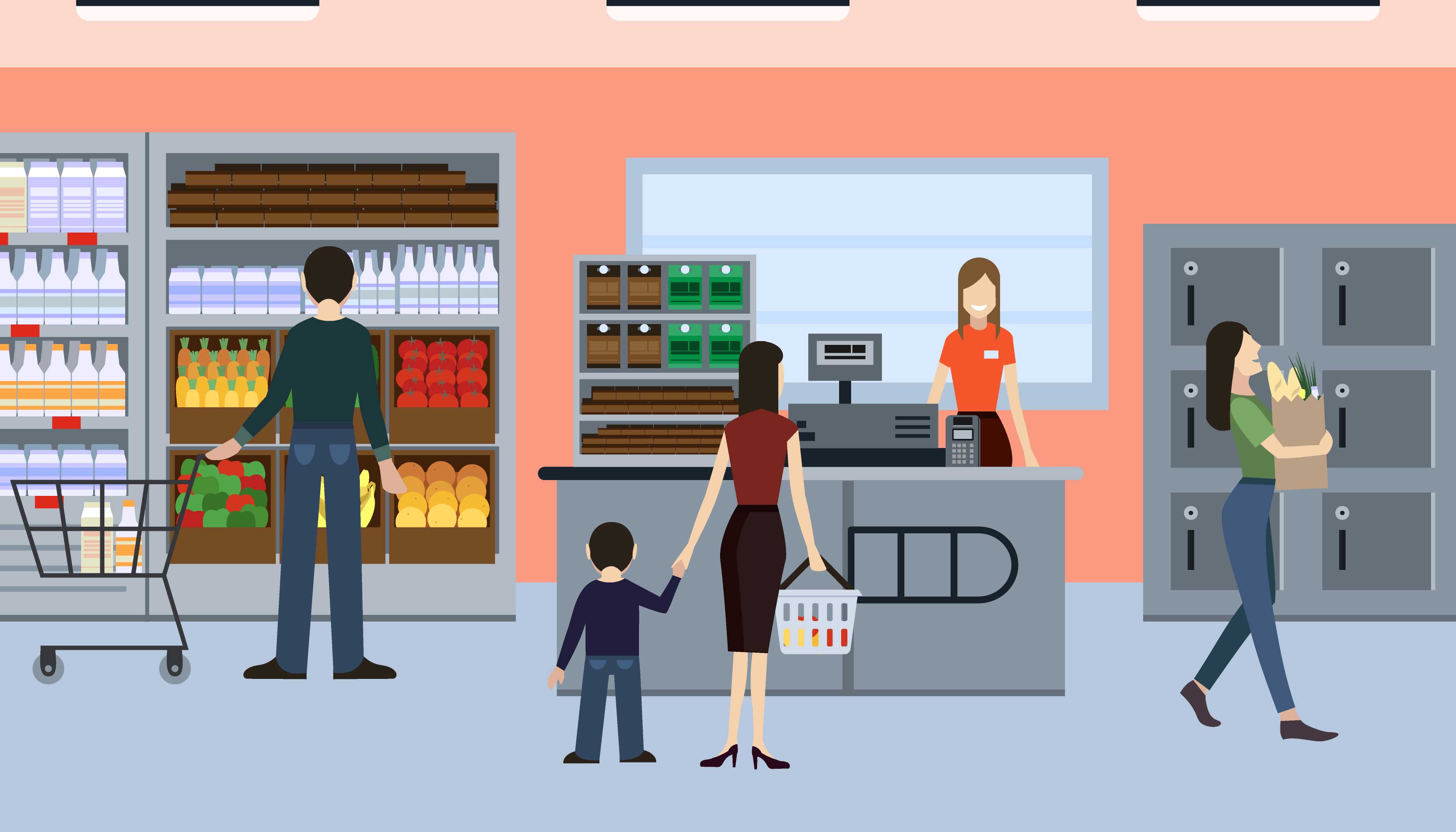
Key Considerations When Purchasing Grocery POS Every household needs groceries, which makes grocery stores ripe with potential for profitability. However, as in other retail segments, a feature-rich point of sale (POS) system is imperative to success. Here are six key components that you need to choose carefully when putting together a grocery POS system.
1. Grocery POS software. A grocery store has different POS software needs than other types of retail operations. For example, the software must integrate with scales to accommodate the sale of produce and other food items that are priced by weight rather than by SKU. It must also allow manufacturers’ coupons to be scanned easily so discounts are quickly accounted for as orders are totaled. Consequently, when selecting grocery POS software, it’s important to consider only options that are specifically designed to suit the needs of a grocery store environment. A generic POS system just won’t fit the bill.
2. All-in-one touchscreen computer. An all-in-one touchscreen computer is the central core of a grocery POS system.. It typically comprises a personal computer (PC) and an integrated touchscreen monitor. Other components, like an integrated payment card reader, are sometimes included. The integration of the PC and touchscreen monitor increases the speed with which cashiers can ring up transactions. Meanwhile, the smaller footprint of the all-in-one’s hardware saves space, which can be particularly helpful in smaller establishments where space for grocery POS is at a premium.
3. Cash drawer. The cash drawer holds bills, coins, checks, and other tender, as well as redeemed coupons. Because grocery stores are usually high-traffic establishments, your grocery store POS system should include a cash drawer that’s built to be durable; for instance, manufactured from heavy-gauge metals and rated for millions of operations.
4. Bar Code scanner. With the exception of produce and other goods sold in bulk, most items sold in grocery stores have a bar code that must be scanned for them to be quickly rung up at the checkout counter. This necessitates a bar code scanner. In many cases, a grocery store POS system incorporates a scanner/scale combo (see item #6). However, it may a good idea to consider an auxiliary handheld wireless scanner that will make it easier for cashiers to scan the bar codes on large, unwieldy items, such as cases of soda or bottled water. The answer to the question of whether you really need a handheld barcode scanner will depend at least partially on your merchandise assortment.
5. Thermal receipt printer. Grocery POS systems often print thousands of receipts each day, many of which include 50 to 100 items each. Consequently, look for a thermal printer that operates at high speed and has an auto-cut feature so removing receipts from the roll requires minimal, if any, tearing or pulling. Limiting your receipt printer selection to less noisy models is a good idea as well, because printer noise can be a disturbance and a distraction to customers and cashiers alike.
6. Scanner/scale combo. A combination scanner and scale component, which is frequently called a “platter,” distinguishes grocery store POS systems from POS systems used in other vertical markets. The combo melds a highly sensitive scale used for weighing produce, bulk foods, and anything else that’s sold by the pound with a laser bar code scanner.
You can use an adaptive scanner/scale model, in which the scanner and scale are standalone, separately designed units (often from different manufacturers), or an integrated scanner/scale option. With the latter, the scanner and scale are incorporated at the point of manufacture, and there’s no duplication of power supplies or cables as occurs with an adaptive scanner/scale configuration.
Given the important role the grocery POS system plays, you can’t be too careful when it comes to selecting the right components. When selecting the best grocery POS for your business, work with a POS partner who can understand your specific needs and challenges and find features and functionality that address grocers’ unique needs.

